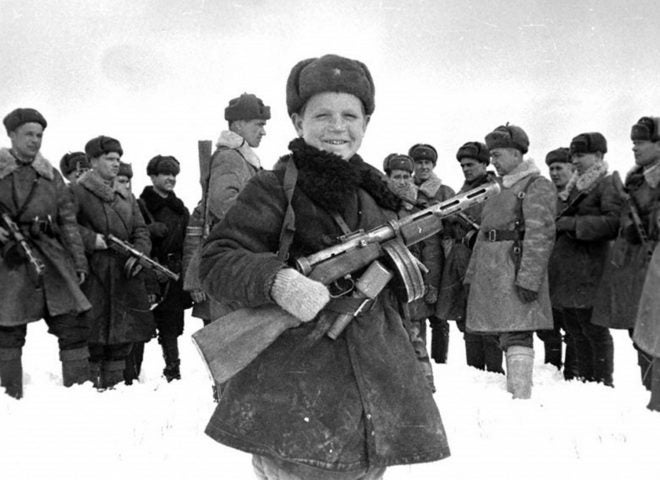Everyone knows about the Soviet “burp gun” – PPSh-41. But its predecessor, PPD 34, is much less known, both in Russia and internationally.
There are many reasons for that – one of them is the fact that very few of those guns are still existing today. In March of 2018, I had a chance to shoot it and film some footage for the Kalashnikov media project “100 years of Red army”.
At that time, I didn’t really understand how rare PPD 34 really is. The night after we finished filming, I tried to look up some videos with this weapon, only to find out that there are none. Later PPD variants, such as PPD 38 and PPD 40 are much more prolific, and were featured at Ian MacCallum youtube channel “Forgotten weapons”.
But for PPD 34, this video seems to be the only existing footage of this weapon actually being fired.
Shooting PPD 34 was a very interesting experience. Halfway through the range day, the weapon lost extractor spring, we barely found it on the floor. It looked like the fun is over, but my morbid curiosity forced me to load the magazine just one last time to see what would happen.
Inconceivably, the gun kept working. It had a few stoppages later, but we managed to shoot at least 100 more rounds without the extractor spring. To this day I don’t completely understand how exactly it was possible.
This experience led me to do some research about the origins of this rare gun, and just like many other weapon systems of that time, PPD has a fascinating history.
PPD 34 was developed by Vasilii Degtyaryov, a very prominent Soviet firearms designer.
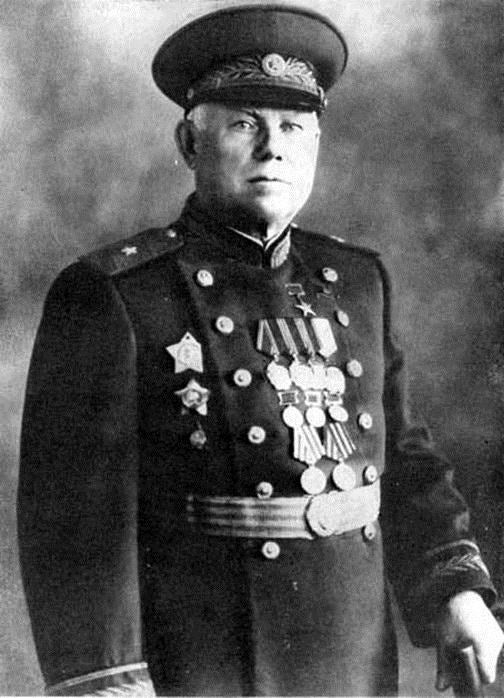
And in this case “prominent” would be a gross understatement. His resume would make some modern weapon design engineers swoon.
- He developed the FIRST Russian light machine gun – DP-27.

- He developed the FIRST Russian submachine gun – PPD 34.

- He developed the FIRST Russian heavy machine gun – DK, which later became DShK.

- He developed the FIRST Russian medium machine gun – DS-39.

- He developed the FIRST Russian anti-tank rifle – PTRD.
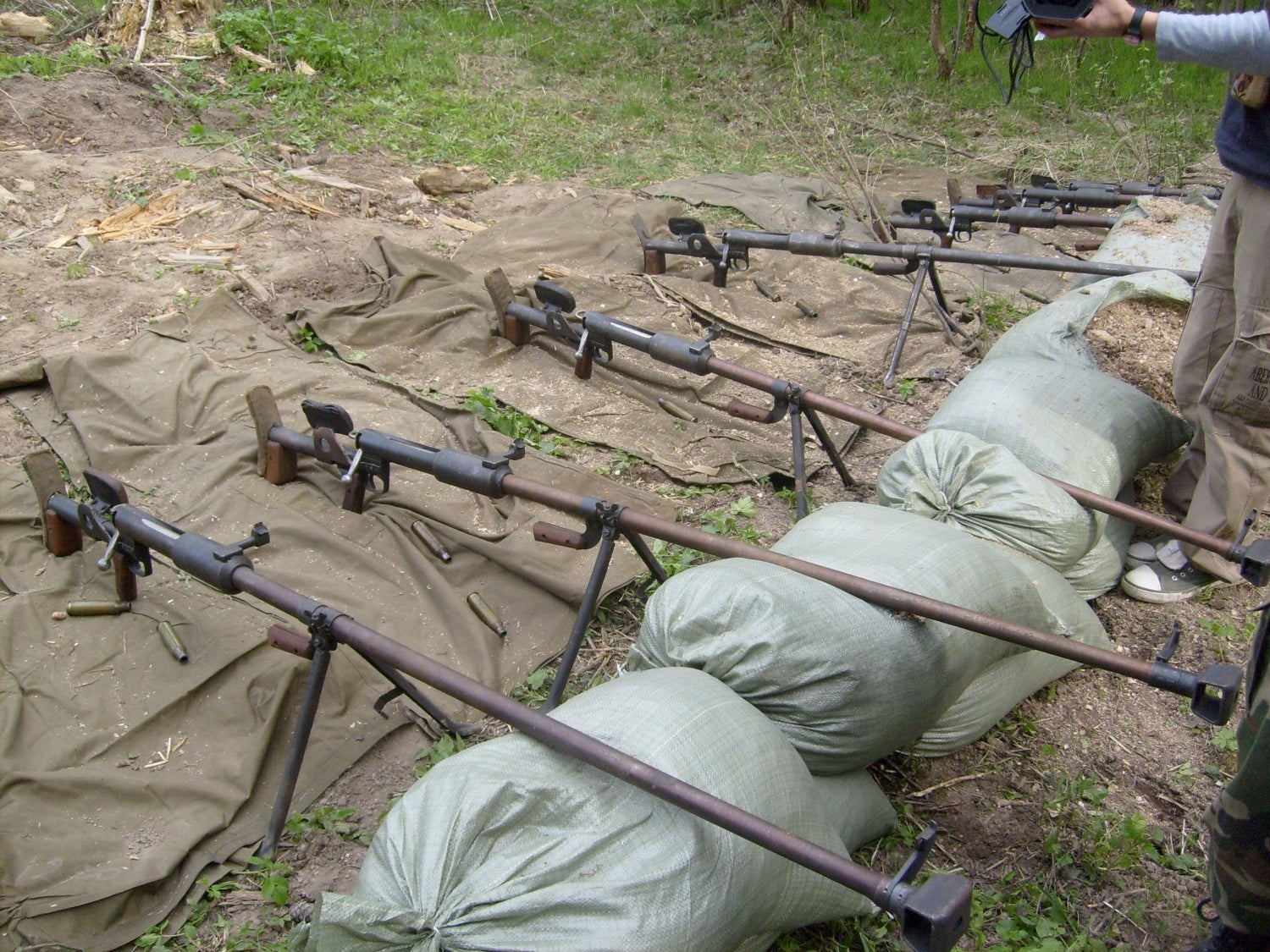
- He developed the FIRST Russian light machine gun in intermediate caliber – RPD (RPD-44).
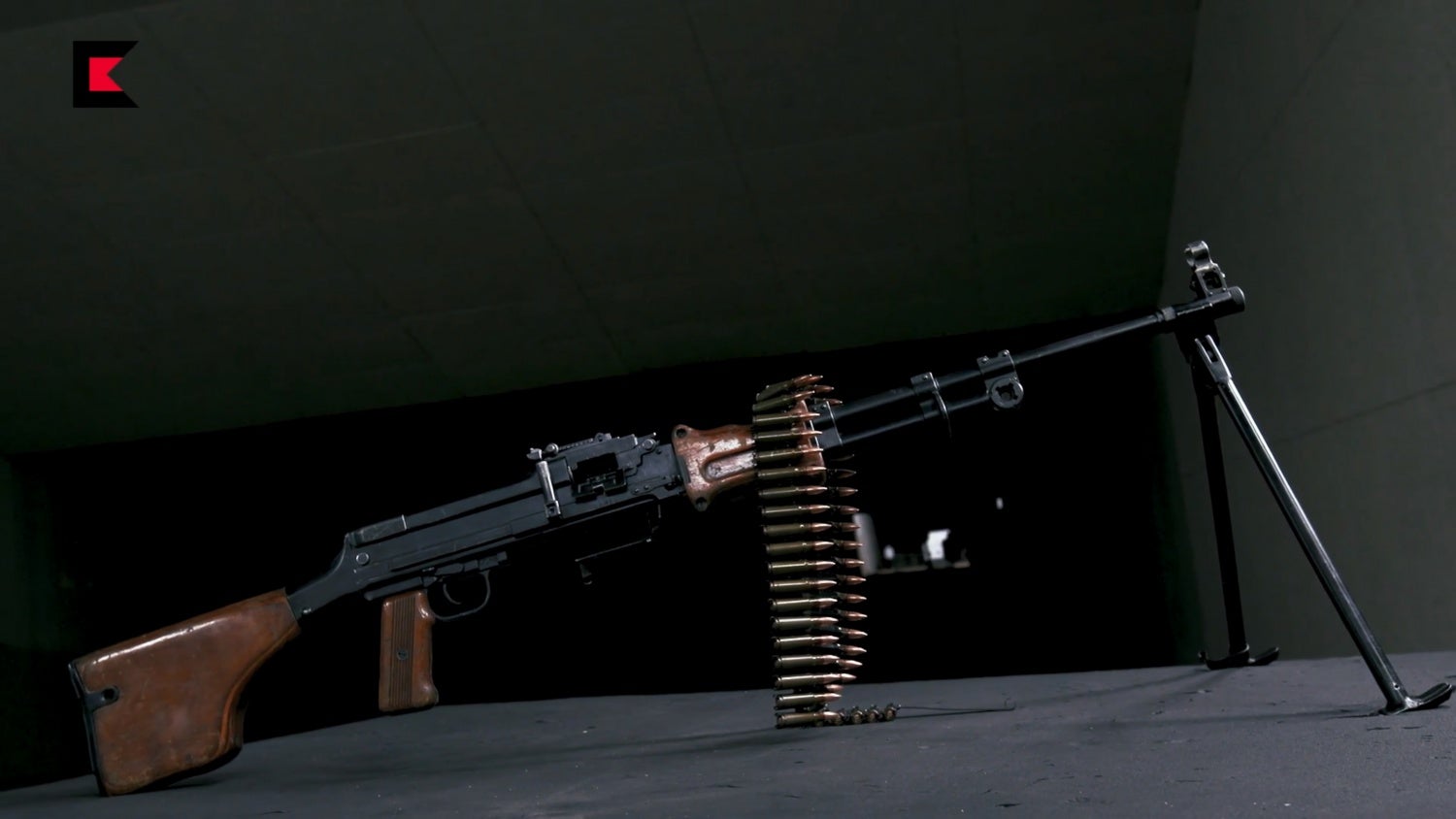
Every weapon in this list deserves its own series of articles. Not all Degtyaryov’s designs were successful, DS-39, for example, was a complete disaster.
Some weapons he developed were rather simple and crude, like a single shot PTRD anti-tank rifle chambered for 14.5 mm round, but despite its simplicity that weapon definitely got the job done.
Degtyaryov started working on PPD in 1929. His first prototype resembled DP-27 LMG; used delayed blowback action and was heavy and too complex. He continued with the second prototype, and in 1930 it was tested alongside Thompson Model 1921, which the Soviet Union bought through Mexico in 1924.
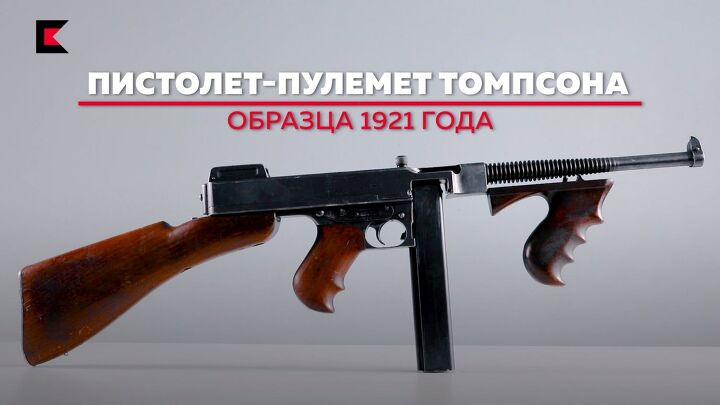
One of the Thompson SMGs procured in the 1920s for NKVD
The first trials were unsuccessful. PPD’s rate of fire was too fast (about 1000 shots per minute), recoil was unmanageable, so it took Degtyaryov another five years to work the bugs out of his design.
In 1935 PPD was officially accepted into service as a Personal Defence Weapon for NCOs and officers up to the company commander level. But production rates remained very low: in 1936, Kovrov factory produced 911 PPDs, in 1937 – 1291, in 1938 – 1115, and in 1939 – 1700. Several modifications were made over the years.

All PPD variants, from the earliest (top) to the latest (bottom)
Red Army generals could not decide what role SMGs should have in the armament system, one of the arguments they had was (quote): “Americans and Germans regard SMG unfit for military service and only use them in police and security units”.
Production remained low and in 1939 artillery department of Red Army made an incoherent decision to stop production of PPDs and decommission all SMGs from active duty troops. Artillery department was displeased with the relatively high production cost of PPDs and suggested that “new automatic weapon should be developed to potentially replace PPD”. Needless to say, no alternative to PPDs was offered.
Just 9 months after this “ingenious” decision was made, “Winter War” started. Finns had a reliable and effective Suomi M31 submachinegun which they used very effectively against Soviet troops.
Author shooting Suomi M31 during a trip to Finland
After Red Army experienced the effectiveness of SMGs during the first months of the Winter War, all available automatic weapons were given back to active duty troops. The need for automatic weapons was so great, that even Fedorov battle rifles were issued to the troops for the first time since World War I and Civil War.

The only known photo of Fedorov battle rifle “in action” was taken during the Winter War
Soviet soldiers really liked Suomi M31 SMGs they managed to capture. Overall, M31 Suomi impressed Soviets so much, that, according to the memoirs of General Vannikov, Joseph Stalin asked him once: “Can we maybe start production of Suomi SMGs in the Soviet Union?” General convinced Stalin to resume production of PPD, not knowing what consequences it would have for the factory.
Stalin took the production of PPDs under his “direct control”. The factory was given completely impossible tasks and deadlines. When deadlines were not met, a group of NKVD officers, Stalin’s secret police, was sent to the plant to “investigate suspicious individuals who were bought off by enemies of the state”. At the time, it meant only one thing – arrests based on false accusations and and executions.
Director of the factory and chief design engineer were arrested, and Stalin himself wrote a letter promising (quote): “If deadlines are not met, the government will take the manufacturing plant under special control and execute all the bastards clogging up the factory”.
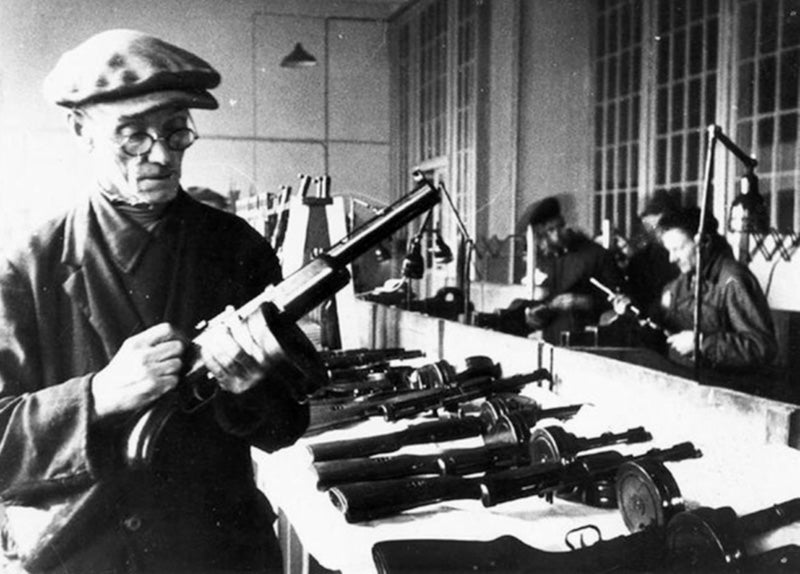
Quality control at the Kovrov factory
Despite impossible odds, the factory managed to start full scale 24/7 production very quickly and that insane promise of mass executions was not fulfilled. Another obsession of Stalin was the idea of a drum magazine on an SMG, so he ordered that a PPD without a drum mag must not leave the factory. Degtyaryov and his team slightly modified the design of Suomi drum magazine and put it into production in less than a month.
After the Winter War, Red Army leadership finally understood the purpose and role of SMGs in the armed forces, so they issued technical requirements for a new SMG, designed with ease of mass production in mind. In December of 1940 new PPSh was officially accepted into service.
This is where the history of PPD should have ended, but the 1941 German invasion forced factories to expand and produce every available weapon system. One of those factories was Sestroretsk tool production company, located in Saint-Petersburg. In 1941, right after the invasion, the factory was evacuated to Siberia.
But the situation was so grave that later in 1941 the decision was made to use leftover equipment to start production of PPD. Very soon city was under siege, as a result, hundreds of thousands of people died of starvation, but production of PPDs still continued. Since men were mostly drafted to the army, women, and kids had to work at the factory and all the weapons went directly to the frontline located just a few miles away from the factory.
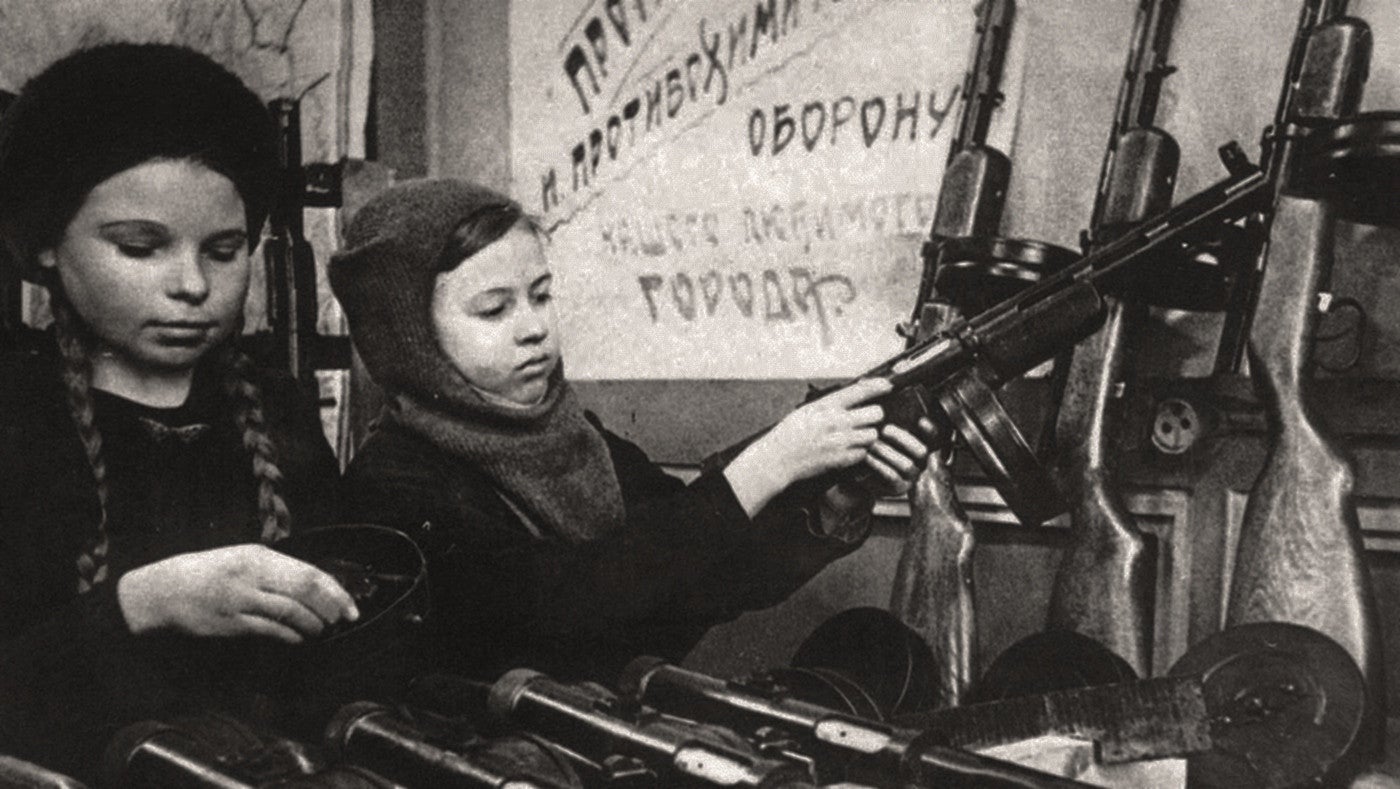
Two girls, who worked at the factory producing PPD-40, Nina Nikolaeva (left, with braids) and Valia Volkova (right).
During the Siege of Leningrad, despite deadly hunger that killed hundreds of people every day, constant German bombings and artillery strikes, unbearable cold and regular power outages that stopped all manufacturing equipment – a total of 42 870 PPDs were manufactured.
But it wasn’t just manufacturing – right there, in Leningrad, Alexei Sudaev developed his PPS submachinegun that many people call “the best SMG of WW2”. In 1942, easy to produce PPS completely replaced PPD, retiring this weapon system forever.
Very few of those guns survived the war and you can seldom find them in museums and private collections. It is not the best SMG of WW2, not the lightest, the most accurate, the most advanced. But it is an incredible testament to the real – gritty, bloody and controversial history of the country that made it.
 Your Privacy Choices
Your Privacy Choices
